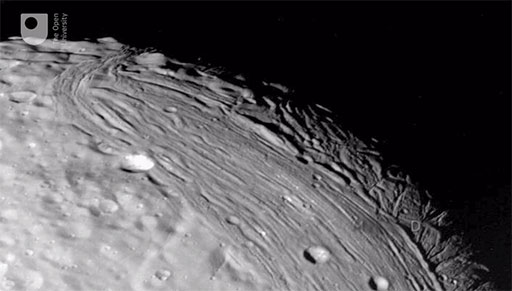1.4 Icy moons
In this video, Paul Schenk describes icy moons in general and tells you more about the exotic ices that can be found further from the Sun. He describes evidence for liquid-water oceans below the surface of some of the icy moons and argues that primitive life could exist there feeding off chemical energy rather than sunlight.

